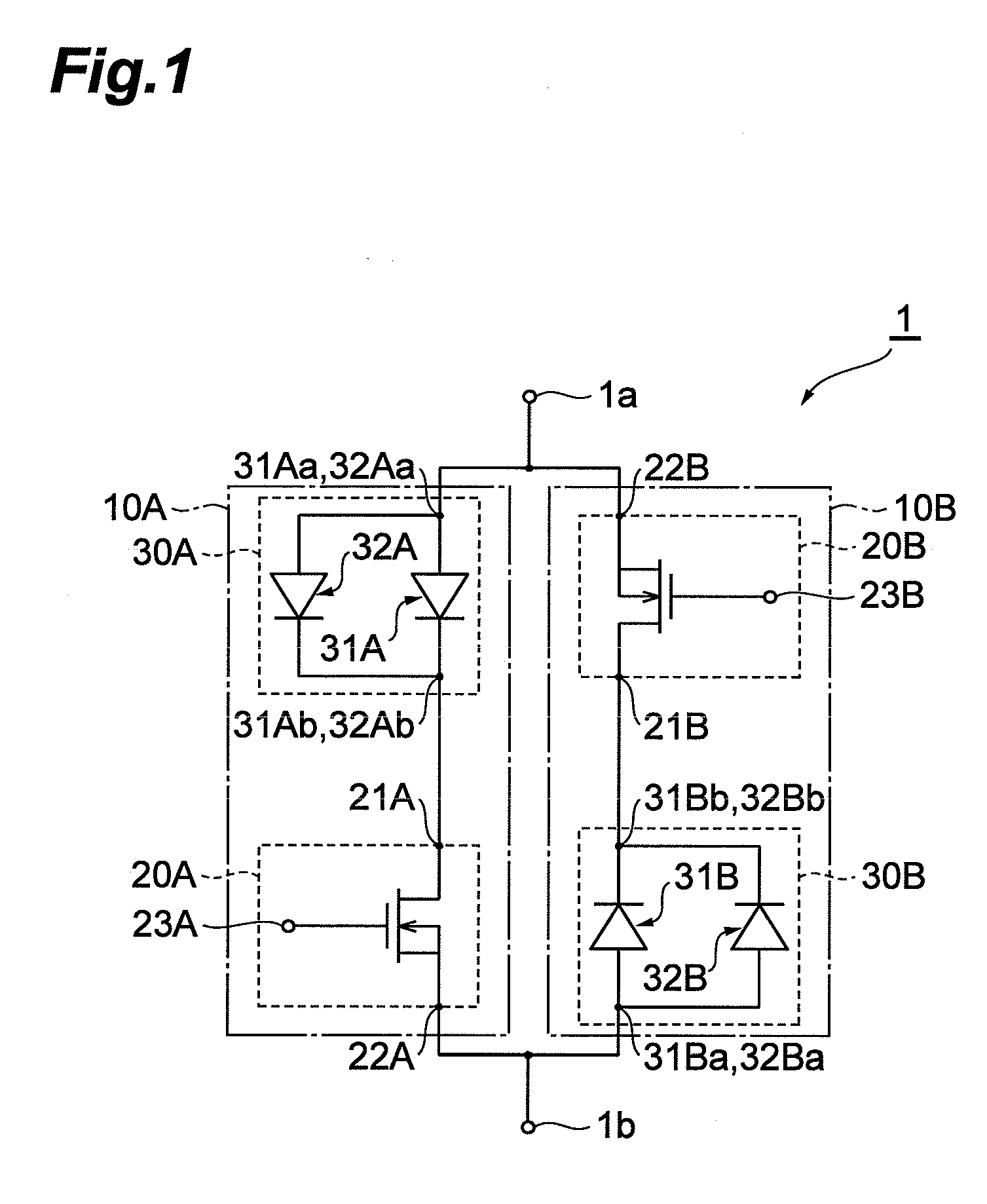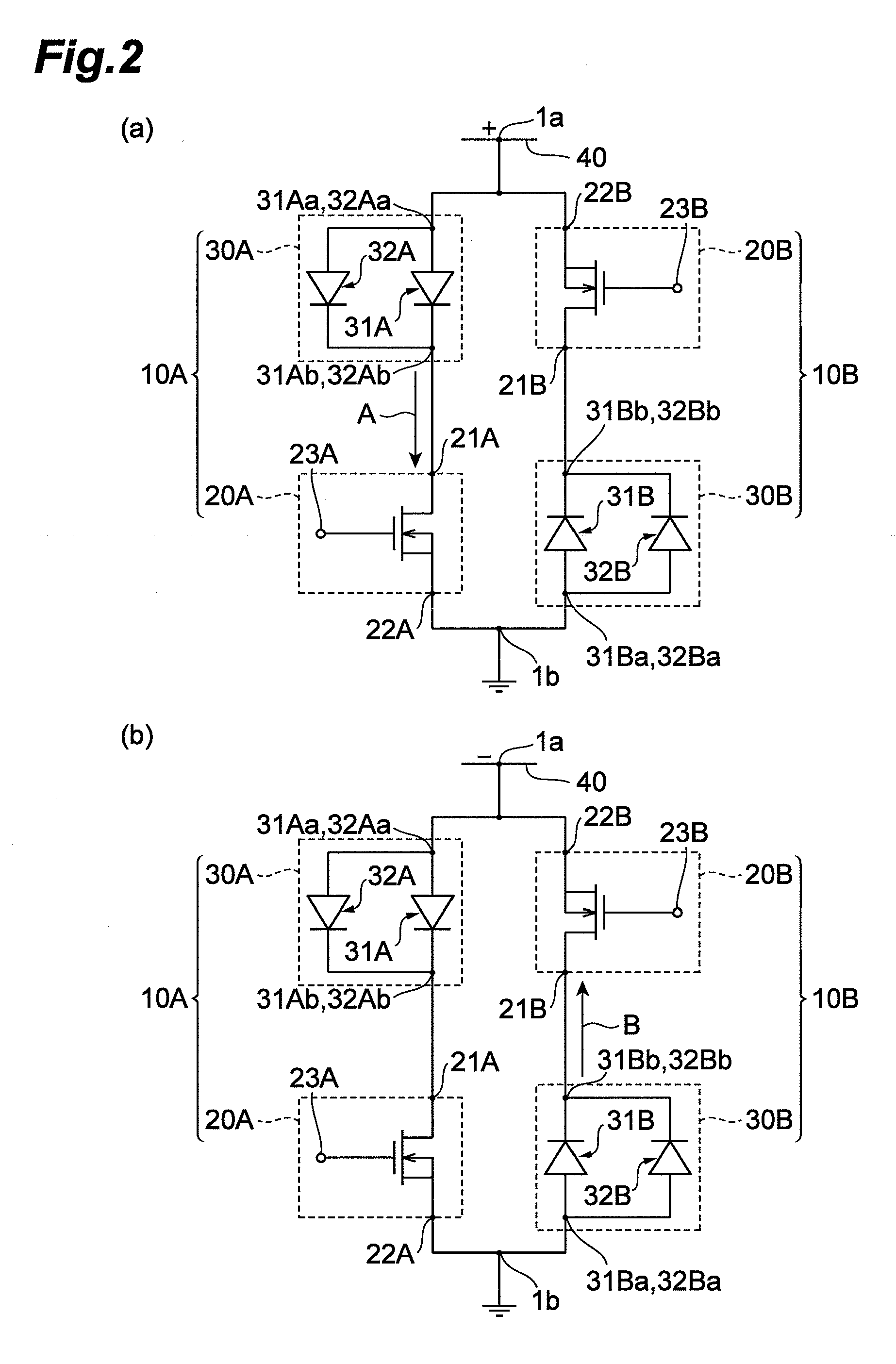Bidirectional switch
a bi-directional switch and switch technology, applied in the direction of electronic switching, diodes, pulse technique, etc., can solve the problems of increasing switching loss, high on-voltage diodes utilizing sic, etc., to achieve the effect of reducing recovery time, reducing switching loss, and reducing switching loss
- Summary
- Abstract
- Description
- Claims
- Application Information
AI Technical Summary
Benefits of technology
Problems solved by technology
Method used
Image
Examples
first embodiment
[0021]FIG. 1 is a circuit diagram showing a schematic configuration of a bidirectional switch according to an embodiment. A bidirectional switch 1 shown in FIG. 1 is a device which can bidirectionally switch the direction of current flowing between a first terminal 1a and a second terminal 1b. The bidirectional switch 1 can be applied to a matrix converter, or the like. In this case, the first terminal 1a is electrically connected to an AC power source supplying an AC voltage, and the second terminal 1b is connected to a load circuit. An example of the load circuit is a motor. The following describes, as an example, a case where an AC voltage is supplied to the first terminal 1a from an AC power source, and the second terminal 1b is connected to a load circuit.
[0022]The bidirectional switch 1 includes: a first series circuit section 10A including a first semiconductor switch element 20A that does not have a tolerance in the reverse direction, and a first reverse current blocking dio...
second embodiment
[0043]FIG. 5 is a schematic view showing a configuration of a bidirectional switch according to a second embodiment. A bidirectional switch 2 shown in FIG. 5 includes a first parallel circuit section 11A and a second parallel circuit section 11B between a first and a second terminal 2a and 2b. The first and second terminals 2a and 2b correspond to the first and second terminals 1a and 1b of the bidirectional switch 1. That is, the first terminal 2a is connected to an AC power source, and the second terminal 2b is connected to a load circuit.
[0044]The first parallel circuit section 11A includes the first semiconductor switch element 20A and the first reverse current blocking diode section 30A connected in parallel in the direction opposite to the first semiconductor switch element 20A. The second parallel circuit section 11B includes the second semiconductor switch element 20B and the second reverse current blocking diode section 30B connected in parallel in the direction opposite to...
PUM
 Login to View More
Login to View More Abstract
Description
Claims
Application Information
 Login to View More
Login to View More - R&D
- Intellectual Property
- Life Sciences
- Materials
- Tech Scout
- Unparalleled Data Quality
- Higher Quality Content
- 60% Fewer Hallucinations
Browse by: Latest US Patents, China's latest patents, Technical Efficacy Thesaurus, Application Domain, Technology Topic, Popular Technical Reports.
© 2025 PatSnap. All rights reserved.Legal|Privacy policy|Modern Slavery Act Transparency Statement|Sitemap|About US| Contact US: help@patsnap.com



